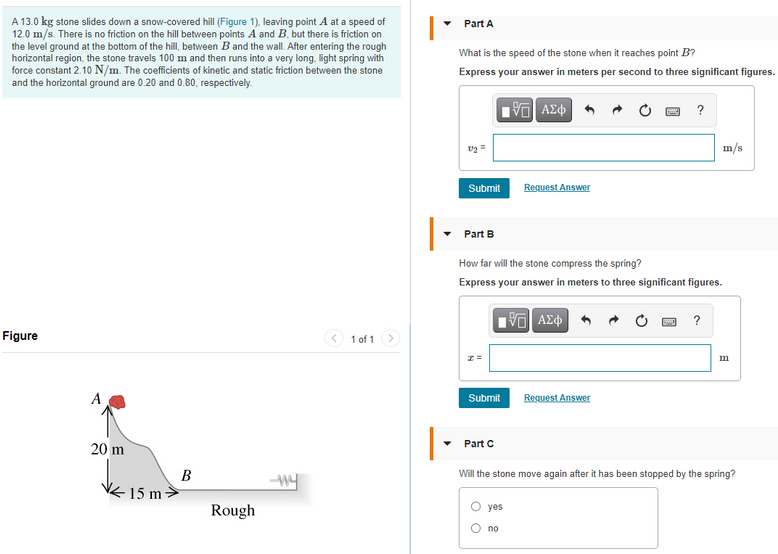A 13.0 kg stone slides down a snow-covered hill (Figure 1), leaving point A at a speed of 12.0 m/s. There is no friction on the hill between points A and B, but there is friction on the level ground at the bottom of the hill, between B and the wall. After entering the rough horizontal region, the stone travels 100 m and then runs into a very long, light spring with force constant 2.10 N/m. The coefficients of kinetic and static friction between the stone and the horizontal ground are 0.20 and 0.80 , respectively. Figure 1 of 1 Part A What is the speed of the stone when it reaches point B? Express your answer in meters per second to three significant figures. v2 = m/s Submit Request Answer Part B How far will the stone compress the spring? Express your answer in meters to three significant figures. x = Submit Request Answer Part C Will the stone move again after it has been stopped by the spring? yes no
